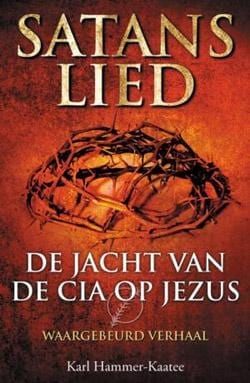Karl Hammer-Kaatee published “Satans Lied: De Jacht van de CIA op Jezus. Waargebeurd verhaal”

666 = Satan’s Song?
Not just any other Rennes-le-Château< book?
In September 2006, Dutch author Karl Hammer-Kaatee published “Satans Lied: De Jacht van de CIA op Jezus. Waargebeurd verhaal”, or “Satan’s Song. The CIA Hunt For Jesus. A true story.”
Though written in the format of a novel, the book claimed to be based on facts. The publication itself does not list an official classification (e.g. fiction) on the book itself, hence leaving one guessing as to which category it fell into.
The book claims to be the account of one “Tom R.”, who told his life’s story to Hammer in the mid 1990s. After Tom’s death, Hammer transformed the notes of a man’s life into the present book.
Upon its publication, the book created a major national controversy, both within the ranks of Rennes researchers, as well as the world of politics – on a national scale. The former were divided between those accepting the story as facts dressed up in reconstructed dialogue and those who felt it was fiction. Nevertheless, the latter did accept that the author had done a very good job in leading the reader down a series of factual historical information, whereby only a small amount of certain information had given “the game” – that this had to be fiction – away. The “believers” countered that these details were often within the bailiwick of reconstructed dialogue, and that it was known and stated by the author that these sections were his “best effort” – as of course no textual accounts remained of dialogue between two individuals that had occurred more than fifty years before
....
Otto Rahn
Despite such an apparent setback, Graddon< is one of those authors who believes that what Rahn was searching for, was actually linked with the “mystery of Rennes-le-Château” – an intriguing conclusion to draw, and which sits well within the larger framework of Hammer’s work. It is, indeed, a recurring motive in trying to verify Satan’s Song: the feeling that the entire story could be true, but often is contrary to known details on certain aspects. But that despite being “wrong”, somehow, the theory as a whole is not only plausible, but verifiable. This, of course, brings us back to the art of disinformation, or “reverse disinformation”: information? In the case of Satan’s Song, it appears as if the conclusion is true, and can be validated, whereas the individual elements appear to be wrong!
...
Philip Coppens<
Similar By Terms
|
(English)
|
(English)
|
(English)
|
(English)
|
|
(English)
|
(Deutsch)
|
(English)
|
(English)
|









Recent comments
13 years 44 weeks ago
13 years 44 weeks ago
13 years 45 weeks ago
13 years 45 weeks ago
13 years 48 weeks ago
14 years 2 weeks ago